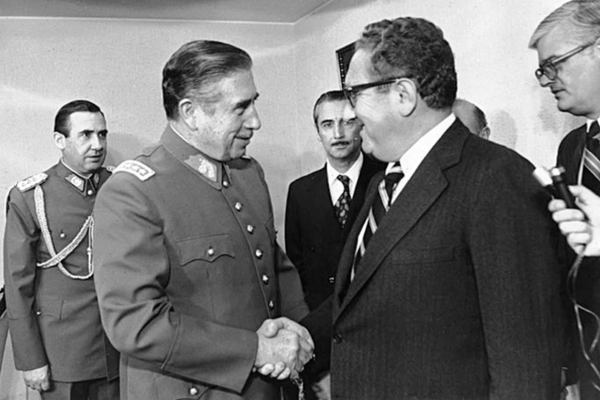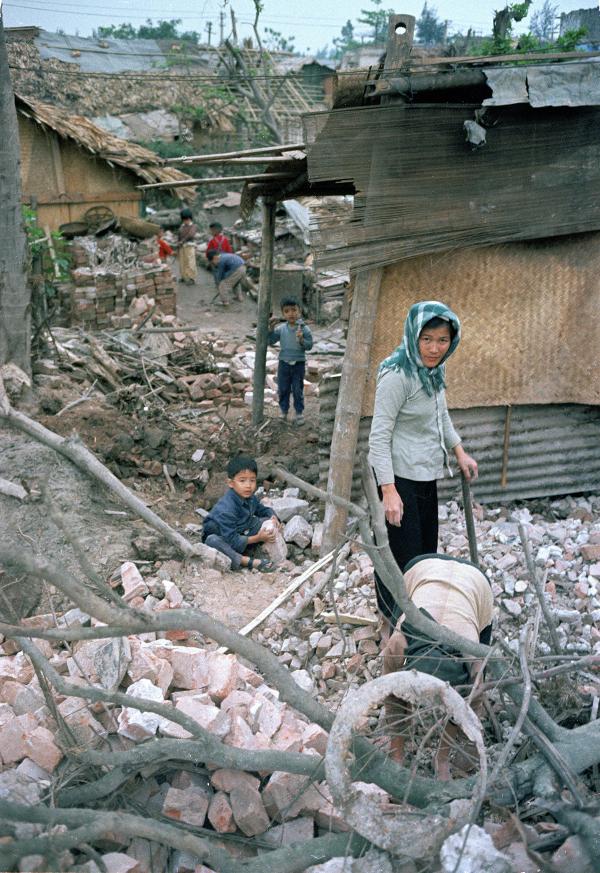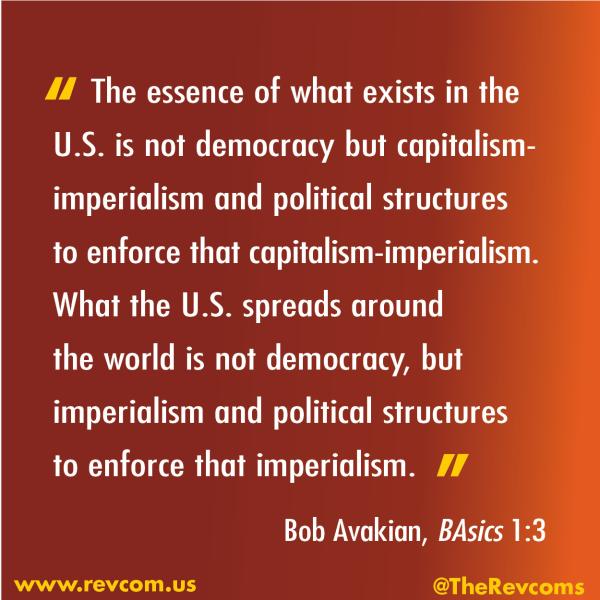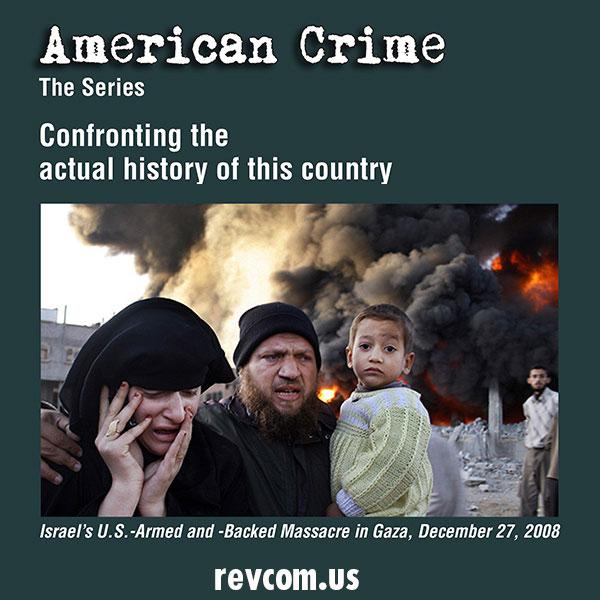
U.S. Secretary of State Henry Kissinger with his fellow butcher of Chile, General Augusto Pinochet, 1976.
On November 29, Henry Kissinger died at age 100. Major news outlets in the U.S. and around the world have devoted literally tens of thousands of words to summarizing his legacy. The New York Times described Kissinger as “the most powerful secretary of state in the post-World War II era.”
For eight years (1969-1977) under presidents Nixon and Ford, Kissinger was Secretary of State and/or National Security Advisor, wielding enormous power. And even in the years after that, he was considered the “wise man” of U.S. foreign policy, consulted by all eight of the presidents who came after Ford, including Biden. He is considered responsible for U.S. “opening” to (then-revolutionary communist) China in the mid-1970s, and for “détente” (official easing of tensions) with the U.S.’s main imperialist rival, the Soviet Union.
He was treated as not only a man of influence but as a “celebrity,” attending all the most “in” Washington parties. In 1974, ABC’s News’s Ted Koppel described him as “the most admired man in America.” When he turned 100 last May, a huge party was held for him at the iconic New York Public Library. Attendees included Biden’s secretary of state Antony Blinken and head of the Agency for International Development Samantha Power, as well as a Catholic archbishop, a former mayor, and retired generals and CIA directors.
And, oh yes, one other thing:
Kissinger was also a mass-murdering war criminal on an almost incomprehensible scale!
This is not just rhetoric—the list of crimes that Kissinger directed is lengthy and well-known, especially to people who were alive at the height of his power, and he was deeply hated by decent people at that time.
An Extremely Abbreviated List of Kissinger’s Crimes:
Vietnam, Laos, Cambodia: About 1,000 U.S. “advisors” first deployed to South Vietnam in 1959 to prop up a U.S.-installed regime. By the time Kissinger and Nixon took office in 1969, there were half a million U.S. troops there trying unsuccessfully to crush a powerful revolutionary struggle to break free of colonialism and imperialism.
In the face of this, Kissinger/Nixon escalated an already barbaric war. They launched secret (at least at first) carpet bombing and invasions of the neighboring neutral countries of Laos and Cambodia to try and cut off the supply lines of Vietnamese revolutionaries. Kissinger’s instructions to the military were to hit “anything that flies or anything that moves.”
Laos had a population of about 3 million—the U.S. dropped 250 million anti-personnel cluster bomblets on them; 20,000 people—half of them children—have been killed by unexploded ordinance since the war ended. At least 100,000 civilians were killed just in Cambodia. In both countries agriculture was devastated and millions of traditional peasants ended up flooding the slums of cities, trying to eke out a bare existence.
In 1972, in an effort to pummel North Vietnam into accepting U.S. terms for ending its invasion, Kissinger/Nixon launched the “Christmas Bombing” of the capital city (Hanoi) and the port city of Haiphong—over 11 days, 20 thousand tons of bombs exploded around the clock, destroying river dikes, hospitals, the electrical grid and other civilian infrastructure, killing thousands.1

North Vietnamese civilians work amid the rubble in Hanoi's Kham Thien district, March 1973. The residential area was bombed by an American B-52 on December 26, 1972, during the "Christmas Bombing" campaign. The North Vietnamese said nearly 300 people were killed, 300 wounded, and 2,000 homes destroyed. Photo: AP
Eventually the war ended in a humiliating and strategic defeat for the U.S… but it left three million Vietnamese dead in its wake (this includes people killed from 1959-1969, before Kissinger took office).
The Chile Coup: In 1970, Chileans elected socialist Salvador Allende as president. The U.S. viewed this as intolerable because he was too close to the U.S.’s imperialist rival, the Soviet Union, and somewhat restricted U.S. companies’ exploitation and plunder of Chile’s people and resources. Kissinger said “I don’t see why we need to stand by and watch a country go communist due to the irresponsibility of its own people.”
And he didn’t; plotting to overthrow Allende began almost immediately. A year later (September 11, 1971), pro-U.S. Colonel Pinochet launched a fascist coup. Thousands of Allende supporters and other leftists were rounded up and held in soccer stadiums. Many just “disappeared,” thousands more were executed, over 100,000 imprisoned and tortured. Up to one million fled their homeland.
In 1976, Kissinger met with Pinochet and told him “You did a great service to the West in overthrowing Allende.”
The Genocide in East Pakistan (now Bangladesh): In 1971, the pro-U.S. military government of Pakistan launched a war against the region of East Pakistan which was trying to secede. In spite of warnings from his own diplomats on the scene that this was going to lead to genocide, Kissinger gave the go-ahead, and provided state-of-the-art fighter-bombers and other weapons to Pakistan. In the slaughter that followed, at least 300,000 Bangladeshis were killed, and roughly 10 million fled as refugees to neighboring India.
Unmoved by the massive suffering he himself had unleashed, reliable reports say that “Kissinger sneered at people who ‘bleed’ for ‘the dying Bengalis.’”
Genocide in East Timor: In 1975, Kissinger and Nixon gave the go-ahead to the Suharto dictatorship in Indonesia (installed in a bloody U.S.-backed coup in 1965) to invade East Timor, which was fighting for independence. The CIA recommended that Indonesia go in with “overwhelming force,” and the U.S. doubled military aid to make that possible. Between 100,000 and 200,000 Timorese were killed or starved to death in the ensuing genocidal war.
Kissinger was the living embodiment of what this system is all about, and exactly the kind of operatives it needs, cultivates and praises. He was calculating, ruthless, deceitful… and laser-focused on advancing the interests of U.S. imperialism by “subduing” rival imperialists and rebellious masses.

You can see this in Kissinger’s praise of the fascist Pinochet as having done “a great service to the West in overthrowing Allende.” You can see it in his contempt for people even within the diplomatic core who were “bleeding” with sorrow as they saw a U.S.-sponsored genocide go down in Bangladesh. And when challenged on the terrible toll of the decision to back Indonesia’s genocide in East Timor, Kissinger reportedly asked staffers how it could be in “U.S. national interest” for Americans to “kick the Indonesians in the teeth?” [Meaning the U.S.-installed Indonesian government, not the Indonesian people.]
Kissinger’s success—in the eyes of imperialists—was applying his strategic sense to advance U.S. power, and not being deterred in the slightest by the rivers of innocent blood that would flow from his decisions. Those who paid tribute to Kissinger, during his life and in his death, were both Democrats and Republicans.
As Biden put it after Kissinger’s death, he had a “fierce intellect and profound strategic focus.” (Emphasis added.)
